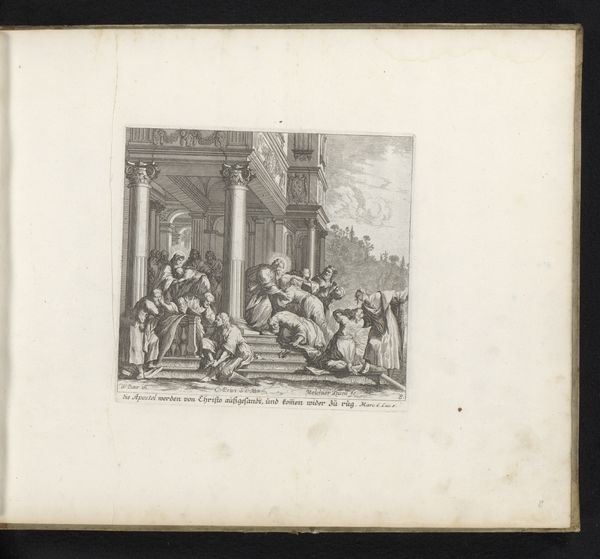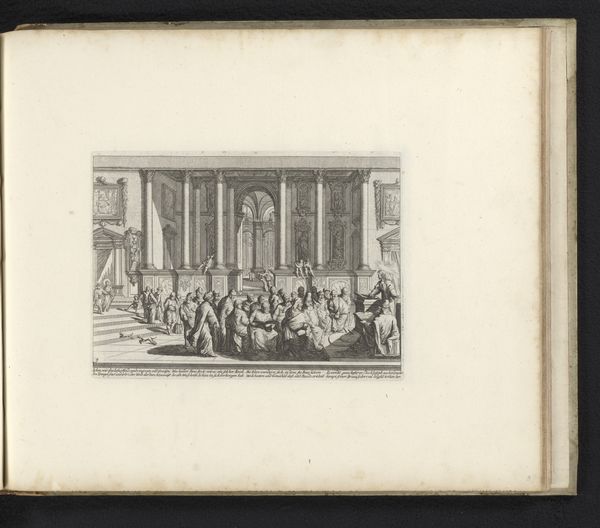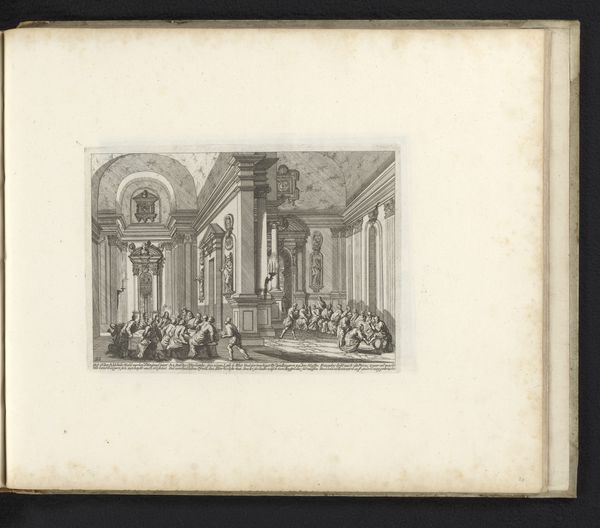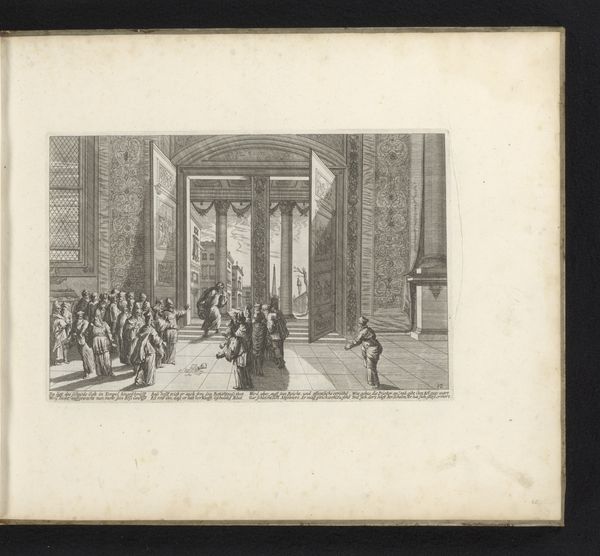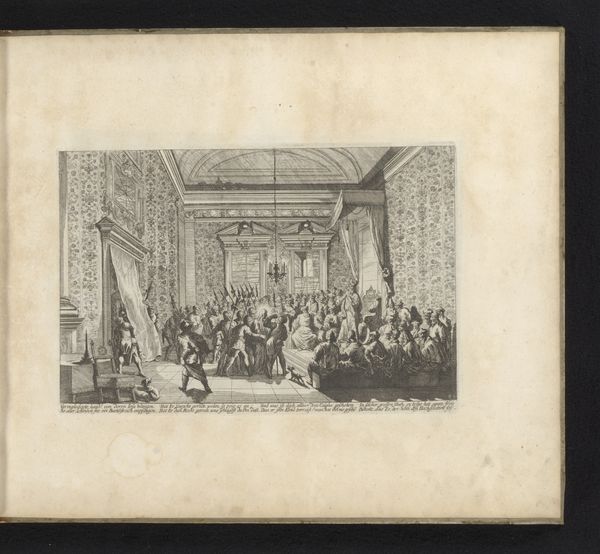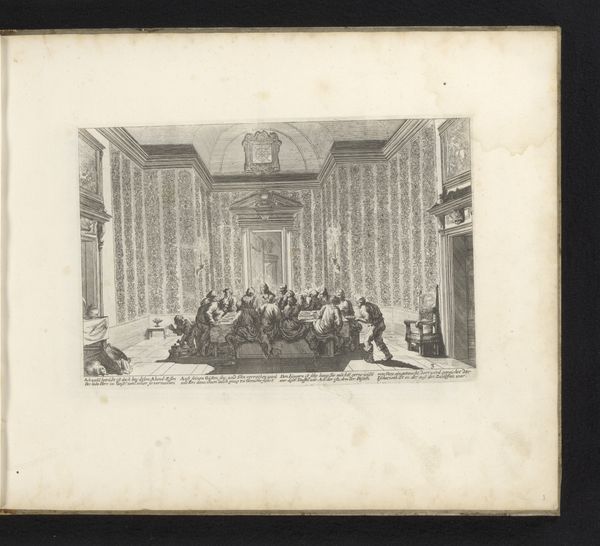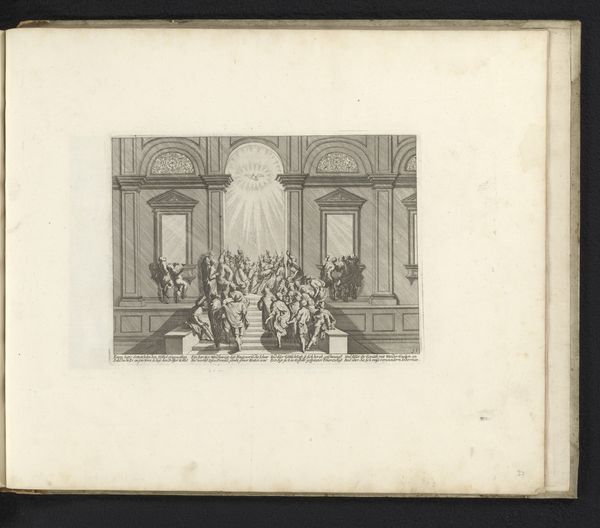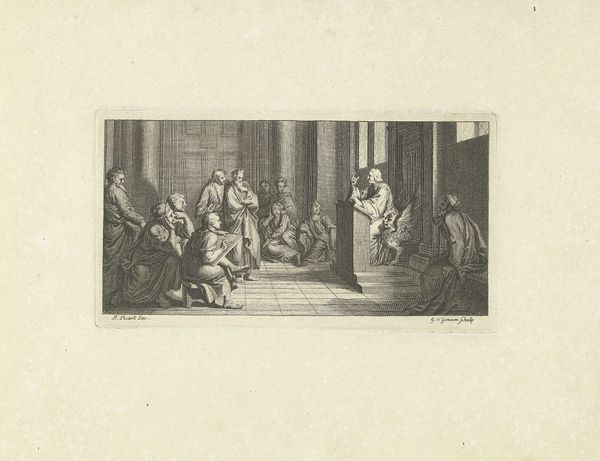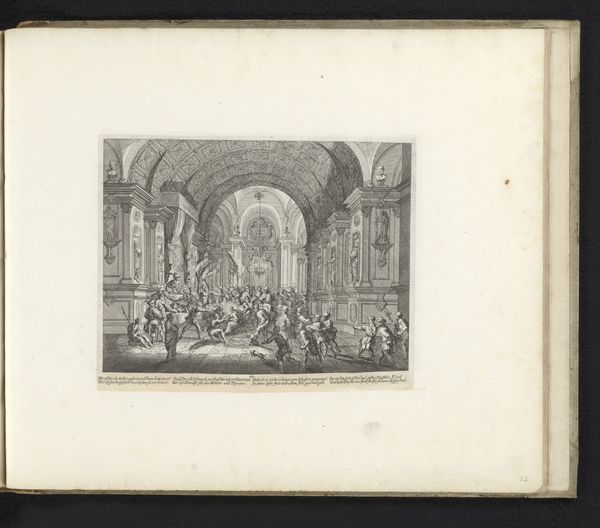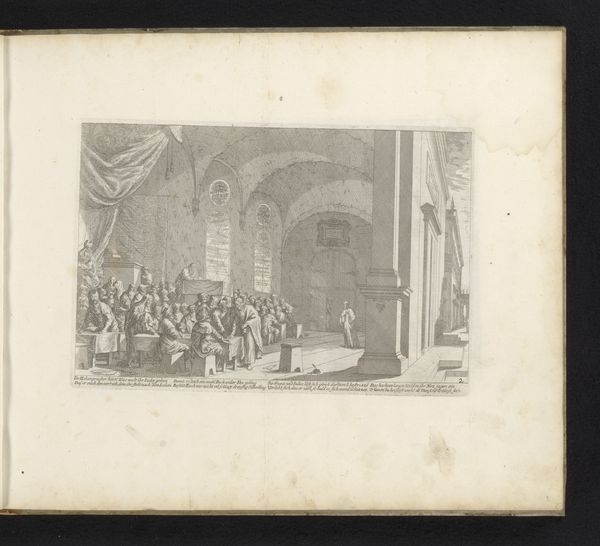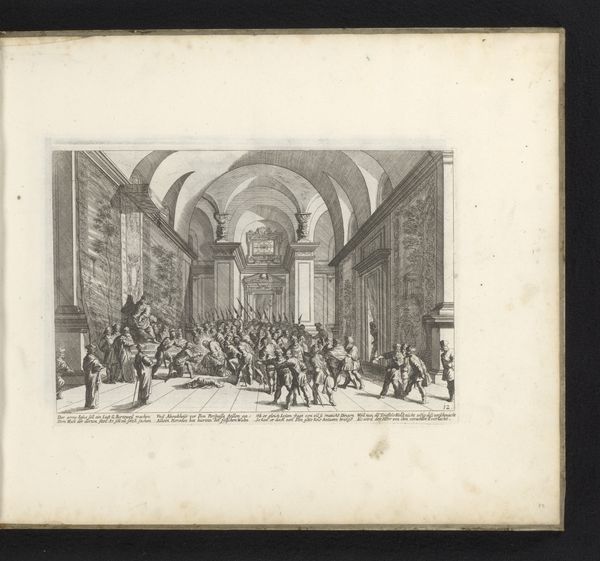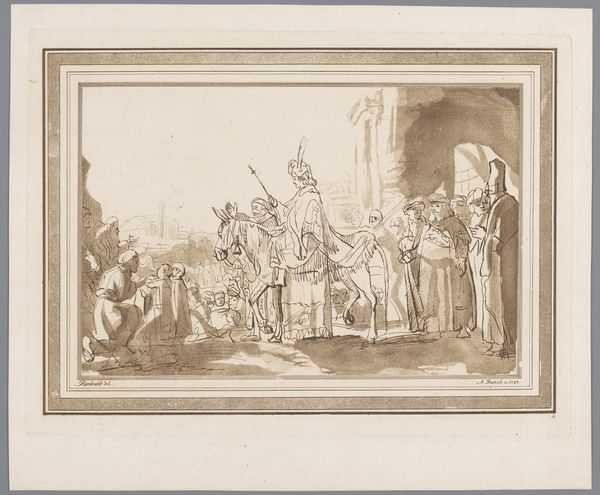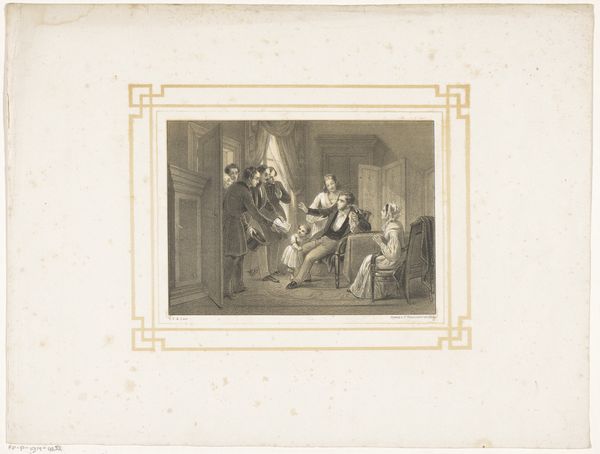
engraving
#
baroque
#
figuration
#
line
#
history-painting
#
engraving
Dimensions: height 172 mm, width 252 mm
Copyright: Rijks Museum: Open Domain
Editor: This is "Voetwassing," or "The Washing of the Feet," an engraving by Melchior Küsel, dating from 1670 to 1682, and housed in the Rijksmuseum. It depicts a scene of servitude within an elaborate, classical setting. What social dynamics might Küsel be exploring in this piece? Curator: This image offers a potent study of power and humility. Look closely at the positioning of the figures – the one kneeling, performing the act of washing, and the reactions of the others. Küsel, working within a Baroque framework, presents us not just with a religious scene, but also prompts us to consider social hierarchies. What do you observe about the gazes and gestures? Editor: Well, there's definitely a contrast. Some figures seem shocked, maybe even repulsed, while others look on with what seems like quiet acceptance. It definitely brings to mind ideas of societal expectations and subversion. Curator: Exactly. Think about the historical context. Küsel’s Germany was deeply stratified. Religious art at the time often reinforced existing power structures. But here, we have a leader, presumably Christ, engaging in the traditionally 'lower' act of foot washing. Do you think this image challenges those power structures? Is Küsel subtly commenting on social reform? Editor: It feels like a statement about inverting the typical social order. Seeing such a personal, humble act visualized challenges ideas about authority and how it should be wielded. Curator: Precisely. Küsel’s work functions almost as a visual sermon, engaging with potent themes of service, leadership, and the disruption of conventional hierarchies. What implications can we then derive in terms of race and gender? How might his choices reflect and perhaps challenge certain social and cultural assumptions in our own time? Editor: That really makes me think differently about the work. It’s not just a historical depiction but a starting point for interrogating power and service in different contexts. Curator: Agreed. Understanding the convergence of historical context and critical theory truly enriches our encounter with art.
Comments
No comments
Be the first to comment and join the conversation on the ultimate creative platform.
